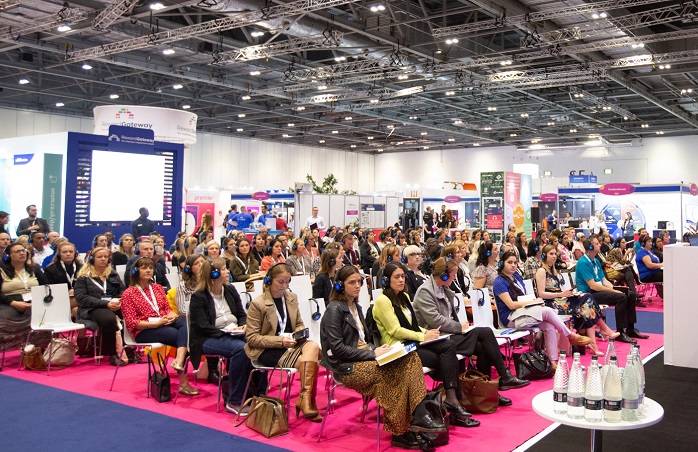
Employee Benefits Live 2019: Professional social media organisation LinkedIn has adopted a people-first approach to its employee experience, business operations and organisational culture, using this as its key driver for talent attraction, retention and motivation.
Closing the conference agenda on Wednesday 2 October at Employee Benefits Live 2019, Katherine Gilbert, senior director, compensation and benefits, Europe, Middle East and Africa (EMEA) and Latin America at LinkedIn, delivered a keynote presentation titled ‘Creating an exceptional employee experience’.
Gilbert outlined how LinkedIn, which employees 15,000 staff across 11 countries, uses its culture and values as the foundation for every facet of business. She said: “Our culture and our values [are] truly the foundations on which everything is built. It’s about how we think about the vision for HR and it’s about how we think about our vision for benefits when we sit down to plan for the year. That people-centred mission is one that needs to be thought about carefully.”
LinkedIn has five cultural tenets, showcasing the attitudes of the business and what it aspires to represent: transformation, integrity, collaboration, humour and results. These form the basis for the organisation’s values: members first, relationships matter, be open, honest and constructive, inspire excellence, take intelligent risks and act like an owner.
“These cultural values and tenets are what underpins developing our benefits strategy and making sure that people feel like they belong at LinkedIn,” Gilbert explained.
In particular, this refers to the organisation’s approach to diversity and inclusion, or as LinkedIn calls it, Dibs, which stands for diversity, inclusion and belonging. This inclusive attitude is applied to LinkedIn’s benefits strategy through an egalitarian approach, ensuring that all benefits are available for all staff, regardless of seniority, location, gender, ethnicity or any other differentiating factor. This includes having a global minimum standard for annual leave, for example, as well as ensuring a global standard for fully paid maternity and paternity leave.
Core to a people-centric approach is undoubtedly family commitments and concerns. With this in mind, LinkedIn introduced its global fertility and adoption benefit, Fab, four years ago; this enables employees to claim back money spent during the adoption process or put towards fertility treatment, helping to ease financial burdens. Gilbert stated that while it may not be used by a large proportion, the mere existence of this benefit sends a strong message to staff, demonstrating that LinkedIn cares for its people and realises that families are diverse.
Care is also at the centre of LinkedIn’s Perks programme, which comprises an annual £1,200 allowance that each employee can use towards services across three categories: self-care, childcare and eldercare. The eldercare element was added to the programme this year, while the childcare section was recently updated to include pets. To date, 92% of LinkedIn’s employees have accessed this allowance.
“Our mission within the benefits world is to create an exceptional employee experience,” Gilbert said. “We want to create things that are unique, they’re personalised and they’re market differentiators.”
The focus on self-care and wellbeing is further demonstrated with LinkedIn’s Investment Day, or InDay. This is one day a month where employees can step away from their day-to-day tasks and instead spend the day investing in themselves; this might include volunteering at an child’s school, undertaking mentoring or coaching, or simply taking a day for themselves. Typically, InDay activities revolve around four categories: giving back, learning, wellbeing and play.
LinkedIn views wellbeing in terms of the mind, body and soul, hosting yoga classes and mindfulness sessions, for example. Gilbert explained that the organisation often looks to its employees themselves as a resource for wellbeing activities, with staff organising and holding sessions that relate to their interests and help them build their own skills in teaching others.
At LinkedIn, recognition is also a central strand of its people-first mentality. This is primarily achieved with its global recognition programme, called Bravo, which awards both points and cash bonuses in real time, and enables peer-to-peer and top-down recognition.
Around 10,000 moments of recognition have been actioned within the last 12 months, and 82% of employees have received recognition in one form or another. Importantly, 60% of the thanks delivered on Bravo is peer-to-peer.
“What we want to focus on is bringing recognition front and centre, and creating more of the social aspectm so it can be celebrated in a broader way,” Gilbert concluded.